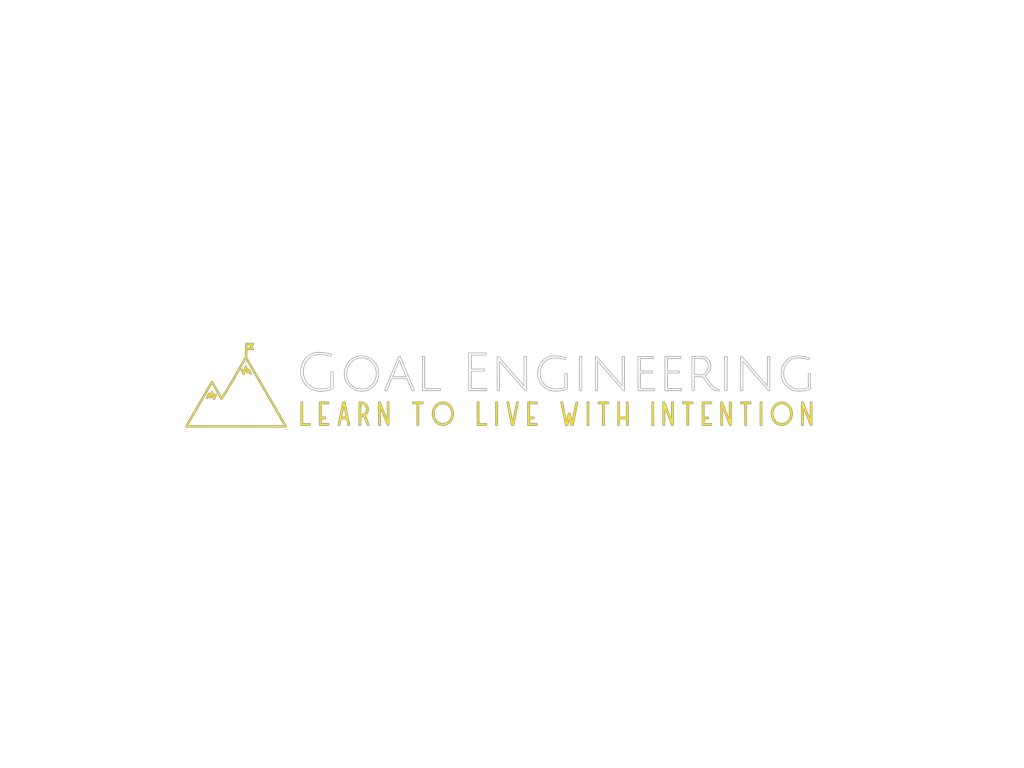Setting goals is the only reliable way to consistently change your life for the better. But too often, you get stuck and fail because you overcomplicate the process. This isn’t your fault, though. Society pressures you to follow overly complicated goal-setting systems, like SMART goals. To beat this and reach your dreams, you need to know how to make goal setting easier.
To make it easier to set goals, think of it in four basic parts:
- Set
- Plan
- Act
- Track
Goal setting doesn’t have to be difficult to be effective. You’re more likely to stick to your goals if you make the process easier because removing the resistance will make you keep going!
Let’s jump right in with the first step!
1. Set
“You are never too old to set another goal or to dream a new dream.” — C.S. Lewis
This step is as easy as writing down what you want to accomplish in life. You can set one goal or you can set many, it doesn’t matter. But to make goal setting easier, start with this step and make it enjoyable by focusing on the goals that really light you up inside.
Try these questions for ideas:
- What do you want to accomplish in life?
- What do you see other people doing that makes you think “I’d be so proud of myself if I did that too?”
- Is there something that gets you excited when you think about doing, like increasing your income, starting a business, or running a marathon?
- If you knew that you’d succeed at every goal you set, what goals would you set?
Write down everything that comes to mind. The list can be long, but you will want to narrow your goals down to just four at most. Use your long list and cross off less-important goals. Have your goals “battle” tournament-style to pick the top 1-4 winners.
I recommend that you start with one if you want to really master the process and make it a habit, though. That way you’ll be able to use the system to more consistently accomplish all your other goals, too.
If you do go for four goals, stick to the main areas of life to set goals in:
- Spiritual
- Social
- Financial
- Health
When you balance your life by setting goals in each of these areas, everything goes better. Positive relationships improve your health and finances. When you’re more fit you have more opportunities to do fun social activities and work harder at your job. And so on.
Every goal you set and every activity you do falls within one of these pillars of life. When you are thriving in all four of them, you’ll get into an upward spiral of growth and fulfillment.
Once you’ve got your 1-4 goals, it’s time to make a plan for each of them.
2. Plan
“A goal without a plan is just a wish.” ― Antoine de Saint-Exupéry
To make a plan to accomplish your goals, you only need two simple components for each goal you set:
- Outcomes
- Action steps
An outcome is the end result you want, like losing 10 pounds or increasing your income. The action steps are what you’ll do each day and week to get your outcomes, like dancing 3x per week or making 3 sales calls per day.
Chunk your outcomes into smaller pieces by deciding where you want to be in a year, then dividing that into quarterly parts. Then break it down even further by dividing each quarter into what you need to accomplish each week for 12 weeks.
If I wanted to lose 50 pounds, for instance, that’s about 12 pounds per quarter of the year. Breaking that down even further, it’s only losing 1 pound per week for each quarter.
Once you’ve got your end goal, you have to decide which action steps will lead you to that goal. In other words, what thing, if you did it every day, would inevitably lead to the outcome you’re seeking?
Make your action steps fun to make them even easier. If you don’t like running, try dancing or hiking or whatever you enjoy that gets your body moving.
Don’t overthink it though, because this next step is the one that everything else hangs on. Without it, all this planning is useless!
3. Act
“Good planning without good working is nothing.” — Dwight D. Eisenhower
At this point you’ve got your goals and broken them into outcomes and action steps. Now it’s time to start working on them.
The pitfall that most people fall into when setting goals is getting stuck in the planning stage. I’ve been guilty of this too. I consider myself a thinker, and I love planning and preparing. But ultimately, the best plans are nothing without execution.
Recently I was having a tough time getting going with just about everything. The pandemic and craziness of 2020 was taking a toll on me still, even over a year later. I was caught up in all these worries about failures and what if’s when this thought saved me:
“What if I just stopped thinking and got to work?”
I set aside all of my worries and fears and got out of the rut I was in by just focusing on one thing—work! There’s not much more to it than that, just do it!
If you want to learn more about how to get started when you’re overthinking things, check out my post on how to have an action mindset.
And if you’re needing some motivation right now, here’s my favorite quote about why work is so helpful:
“Work is an antidote for anxiety, an ointment for sorrow, and a doorway to possibility.” ― Dieter F. Uchtdorf
Now, the other reason to just begin is that you can only steer the ship in the right direction when it’s moving. In other words, you can only direct your action steps and outcomes to be more effective after you start. But only if you track your goals, which is the final step.
4. Track
“We often overestimate how often we do things, but tracking eliminates this weakness. When we track we just have the facts, not our subjective reflections.” — Betsy Ramser Jaime
There’s a lot of research that shows that when you constantly monitor your progress on your goals, you’re more likely to achieve them.
Like the other steps, this doesn’t have to be complicated. Set aside a little time every day to record your progress on your action steps and about an hour each week to do a weekly review where you check in on your outcomes.
If you’re trying to lose weight, for instance, you’d check in each day to see how well you ate and exercised. Then at the end of the week you’d check your weight to see if you met your outcomes. With this data, you can determine if you need to step up your game with your action steps or increase your timeline by when you want to accomplish your outcome.
As Brian Tracy puts it:
“There are no unrealistic goals; there are only unrealistic deadlines.”
You have lots of options when it comes to effectively recording your progress, but the most important thing is that you just do it. That’s why I suggest that you find a method that works for you. Try one for a while and if it’s not working, try a different one!
Here are four of the best ways to track your goals:
- Pen and paper. You can keep it super simple this way and just use whatever you have lying around. You don’t need a fancy journal or notebook or anything. Just write your progress on whatever you have around.
- Goal or habit tracking apps. These are nice because they help you stay accountable with reminders. They’re not as customizable though, and tend to over-focus on action steps and under-focus on outcomes.
- Journals. While similar to pen and paper, the difference here is that these are often pre-designed for you, so you don’t have to create the system from scratch. That can be a downside, though, if you want to customize your tracking.
- Spreadsheets. This is my personal favorite because it’s so customizable. I’ve been using a spreadsheet for over two years now and it’s really helped me make my goals stick. Which isn’t just a testament to how powerful spreadsheets are, but also to how important it is to find what works best for you! You can see the spreadsheet I created for tracking goals right here. And if you want you use it yourself just go to “File,” then “Make a copy.”
Remember, tracking is the key to making goals stick! It helps you make your goals more effective by showing you the flaws in your original goals so you can refine them at each step.
Wrapping Up
“Most ‘impossible’ goals can be met simply by breaking them down into bite-size chunks, writing them down, believing them, and then going full speed ahead as if they were routine.” — Don Lancaster
Setting goals is the only reliable way to get what you want in life. We tend to overcomplicate the process, but it doesn’t have to be hard.
To make setting goals easier, simply set your goals, make plans to achieve them, get started, and track your progress each day and week.





